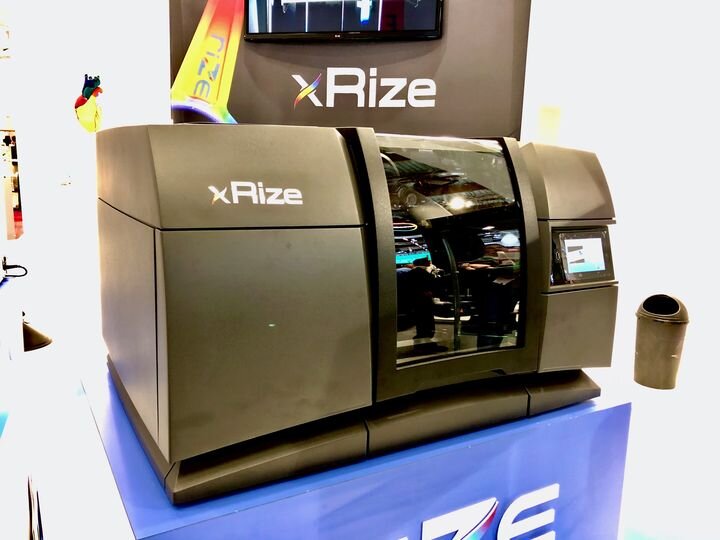![The full color XRIZE 3D printing system from Rize [Source: Fabbaloo]](https://fabbaloo.com/wp-content/uploads/2020/05/xrize-3dp-1_img_5eb08c324c8f0.jpg)
In a discussion with Rize CEO Andy Kalambi, it became clear the company has a significant strategy towards personal safety in 3D printing.
We’ve previously discussed their zero emission 3D printing material, which is incredibly ingenious: the chemistry of the material is such that at normal extrusion temperatures, no emissions occur. No need for fancy filters or venting systems!
Bio-Compatible 3D Printing Material
Their base material is certified for bio-use: RIZIUM ONE. This material has secured USP Class VI certification, meaning it has undergone simulated testing for oral injection, skin exposure and even implantation. It’s said to be the most stringent test available and thus provides confidence for use in medical applications.
But discussing the idea of 3D printer safety with Kalambi reveals deeper concerns. For example, he told us that while PLA emits fewer nanoparticles than ABS, they both emit similar quantities of volatile organic compounds (VOCs). That’s something I have never heard a 3D printing CEO say previously.
Regarding RIZIUM ONE, Kalambi talks about how the material could literally be safely implanted into a human body for up to 24 hours, or safe for external skin contact for up to 30 days. These are are material properties rarely spoken of, particularly for a base material.
3D Printer Safety Thinking
Kalabmi believes there will be a gradual increase in “safety thinking” coming over the next few year, but for the meantime we are basically “stuck in poor materials”. He asks:
“Would you burn plastic in your house?”
And he’s quite right: I wouldn’t. Yet we 3D printer operators perform something similar when 3D printing less safe materials through hot nozzles.
3D Printer Safety Challenge
What will it take to change the current situation and view of material safety? It may be that there will have to eventually be a lawsuit required to set some precedents. Then it’s likely manufacturers and suppliers will pay a lot more attention to safety issues.
Of course, formal workshops and factories already have (or should have) proper safety protocols in place. However, the recent trend of developing 3D printing equipment specifically for office, school (or even home) use exposes material shortcomings to often less-than-rigid safety regimes.
That’s why I think we’ll require a lot more thought directed toward safety issues in coming years. Meanwhile, it seems that Rize already has that target in mind.
Via Rize

